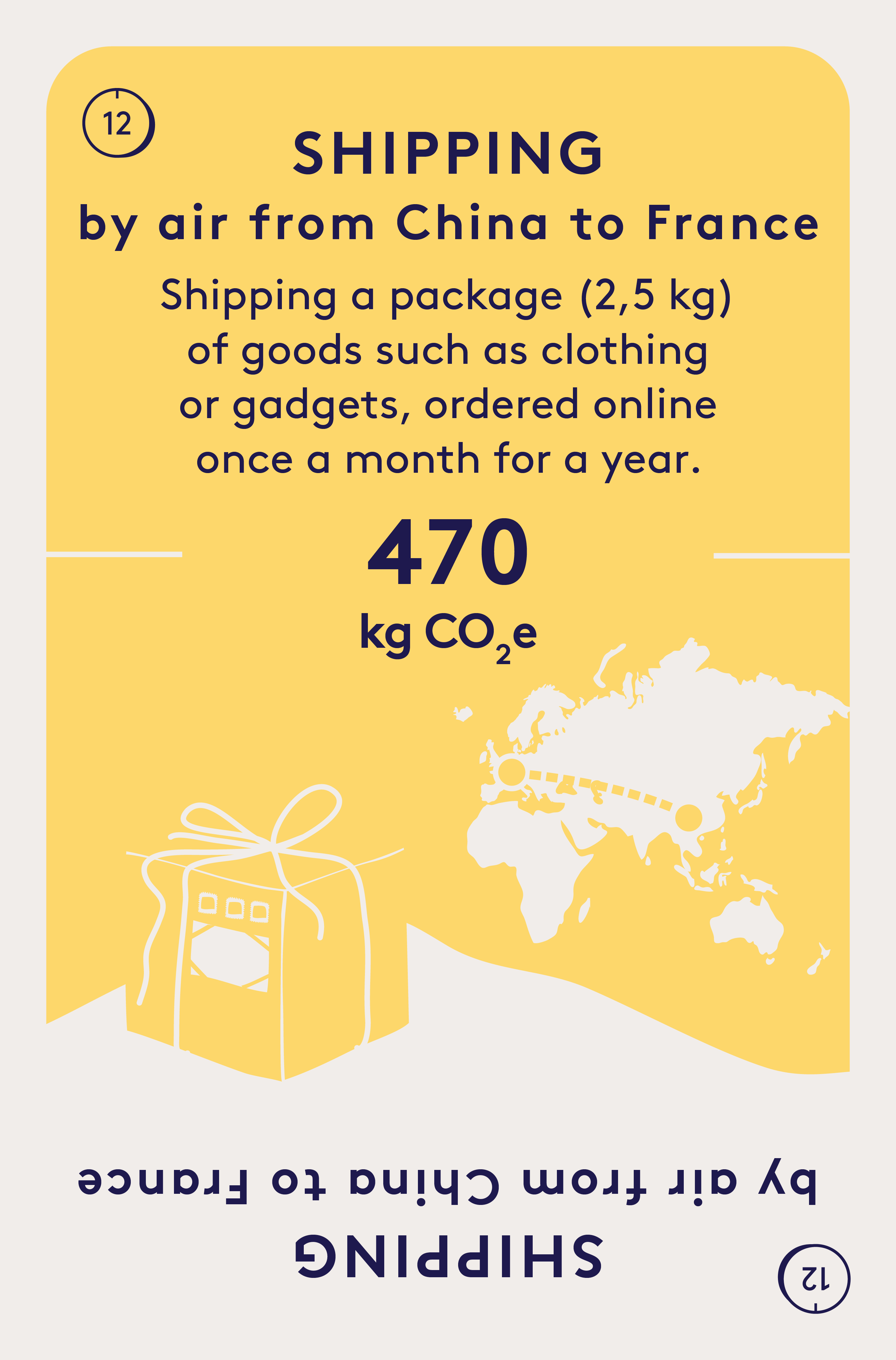SHIPPING
by air from China to France

FOLLOW OUR CALCULATION
Click the expendable headlines to look at each step of the calculation.
The parcels are first transported by truck from a factory in China to the airport in Hong Kong, China. They are then transported by air to Paris, France. Finally, the parcels are transported by truck to the recipient’s home. The trucks are powered by diesel.
Note that we have not included any emissions for the production of the contents of the parcels, and that clothing or gadgets are just examples. This means that only the emissions from the shipping itself are included.
Assumptions and values
The following data have been used to calculate the emissions from shipping:
- Weight per parcel: 2.5 kg
- Transportation distance by air: 9 800 km (distance between Hong Kong and Paris)
- Transportation distance by truck: 200 km (the total distance between the factory and the airport in China, and between the airport in France and the recipient’s home).
- Energy consumption for transportation by aircraft: 10.6 MJ per ton and km
- Energy consumption for transportation by truck: 3.6 MJ per ton and km
- Emissions from jet fuel combustion (kerosene): 88 g CO2e per MJ
- Emissions from combustion of diesel: 89 g CO2e per MJ
- Amplification factor for increased climate impact due to emissions at high altitude: 70% (Lee m. fl., 2021)
The energy use for the air transportation is calculated by multiplying the total weight of the 12 parcels by the energy consumption for transportation by aircraft and the distance flown. The calculation shows that the energy consumption amounts to 3 116 MJ (2.5 kg per month × 12 months × 10.6 MJ per ton and km × 9 800 km).
The corresponding calculation for the transportation by truck shows an energy consumption of 22 MJ (2.5 kg per month × 12 months × 3.6 MJ per ton and km × 200 km).
The greenhouse gas emissions from truck transportation are calculated by multiplying the energy use for truck transportation by the emission factor for diesel combustion. The calculation shows that trucking causes emissions of 2 kg CO2e (22 MJ × 89 g CO2e per MJ).
The greenhouse gas emissions from the consumption of aviation fuel are calculated by multiplying the energy use for air transportation by the emission factor for aviation fuel combustion. The climate impact caused by these emissions is referred to as the direct climate impact, as opposed to the indirect climate impact caused by emissions at high altitudes. The calculation shows that air transportation causes a direct climate impact of 274 kg CO2e (3 116 MJ × 88 g CO2e per MJ).
When emissions occur at high altitudes, the climate impact is enhanced compared to emissions at ground level. The extent of the climate impact amplification depends on the altitude where the emissions take place, which, in turn, is influenced by the distance traveled (the greater the distance, the higher the aircraft flies). In this case, the climate impact is enhanced by 70%. To include the high-altitude effect, the direct climate impact is multiplied by a factor of 1.7. This results in a total climate impact of 466 kg CO2e (274 kg CO2e × 1.7).
The total climate impact is calculated by adding up the climate impact of air and road transportation. The calculation shows that the total climate impact amounts to 468 kg CO2e (466 + 2 kg CO2e), which has been rounded to 470 kg CO2e on the card.
See more card calculations: